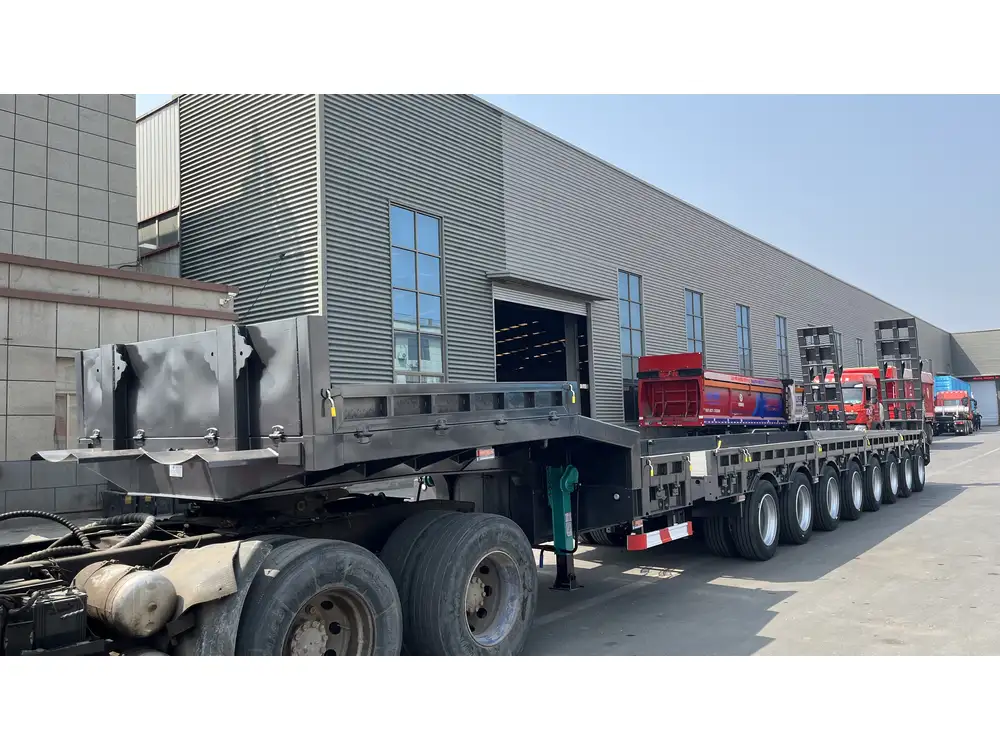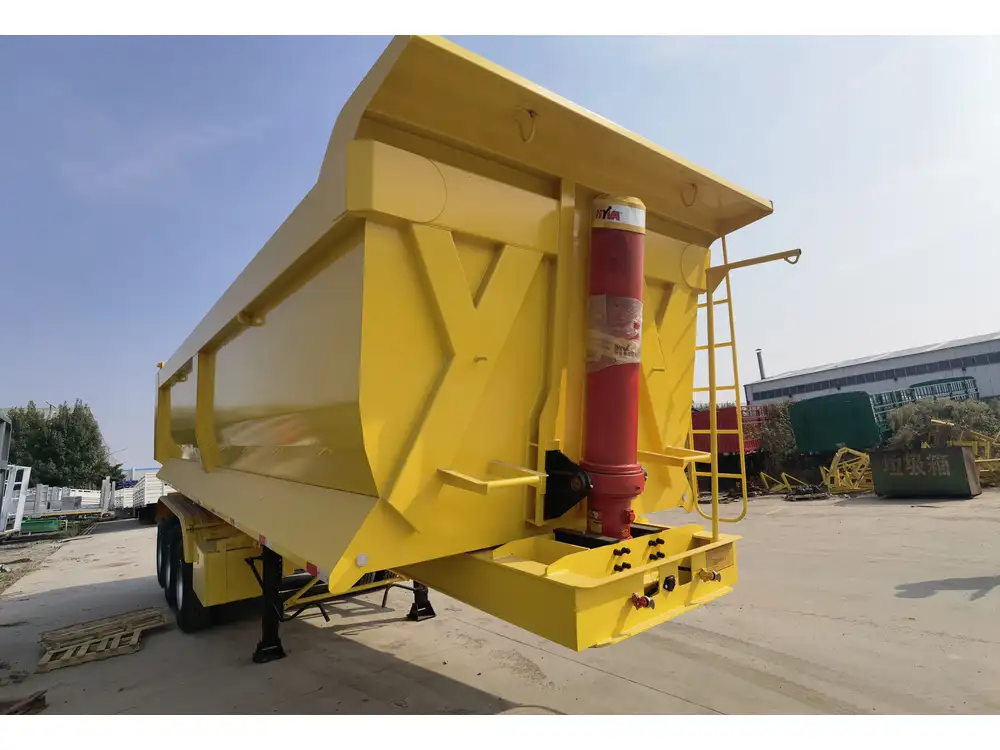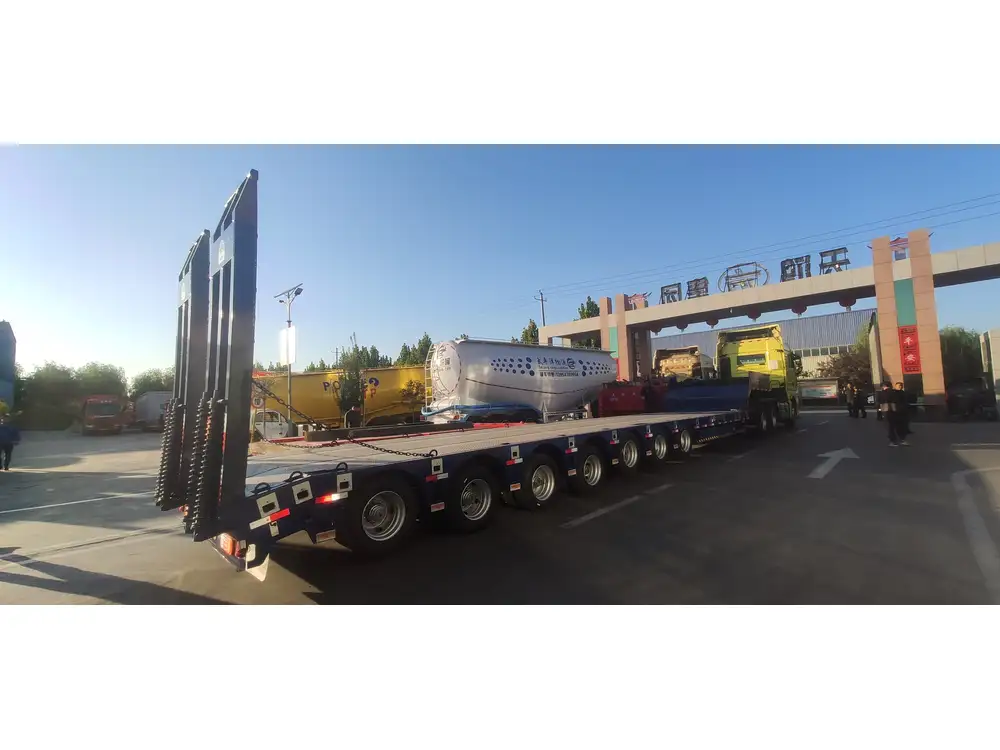When it comes to transport logistics, understanding the weight of aluminum semi-trailers is crucial. Weight impacts not only the load capacity but also compliance with regulations, fuel efficiency, and overall operational cost. In this guide, we will delve into the factors affecting the weight of aluminum semi-trailers, compare them with other materials, and discuss implications for users.
The Basics: What is an Aluminum Semi-Trailer?
An aluminum semi-trailer serves as a critical asset for the freight transportation industry. Known for their lightweight yet durable characteristics, aluminum trailers have gained fame among manufacturers and operators alike. Aluminum trailers typically weigh less than their steel counterparts, allowing for increased payload capacity and improved fuel efficiency. Weighing typically between 10,000 to 12,000 pounds (approximately 4,500 to 5,500 kg), aluminum trailers can vary significantly depending on the design, size, and type.
Table 1: Comparison of Material Types for Semi-Trailers
| Material | Weight Range (lbs) | Benefits | Drawbacks |
|---|---|---|---|
| Aluminum | 10,000 – 12,000 | Lightweight, corrosion-resistant | Higher initial cost |
| Steel | 12,000 – 15,000 | Lower upfront cost | Heavier, prone to corrosion |
| Composite | 11,000 – 13,000 | Lightweight, fire-resistant | Expensive, limited availability |

Factors Influencing the Weight of Aluminum Semi-Trailers
Understanding the cumulative weight of aluminum semi-trailers involves evaluating various elements:
1. Construction Design
The design of an aluminum semi-trailer can influence its weight significantly. A standard flatbed usually weighs less than a reefer (refrigerated) trailer, primarily due to the absence of insulation and refrigeration components.
2. Trailers’ Length
The longer the trailer, the heavier it tends to be. For example, a standard 48-foot aluminum semi-trailer might weigh around 11,000 lbs, while a 53-foot model could be closer to 12,000 lbs.

3. Loading Capacity
Trailers designed for higher loading capacities often employ heavier materials and more reinforcements, thereby impacting their overall weight.
4. Components and Accessories
Additional components such as axles, landing gear, and tarping systems can add considerable weight to the semi-trailer. A typical axle weighs between 800 to 1,200 pounds.
5. Internal Features
Refrigerated trailers, air ride suspensions, and integrated braking systems may advertise enhanced functionality but also contribute to increased weight.

Aluminum Semi-Trailer Types and Their Weights
Unpacking specific types of aluminum semi-trailers helps inform users how weight varies across different models.
1. Flatbed Trailers
- Weight: Approximately 10,000 – 11,000 lbs
- Use: Transporting heavy machinery, large construction materials.
2. Reefer Trailers
- Weight: Approximately 12,000 – 12,500 lbs
- Use: Shipping perishable goods at controlled temperatures.

3. Dry Van Trailers
- Weight: Approximately 11,500 – 12,000 lbs
- Use: Carrying packaged freight that does not require temperature control.
4. Tanker Trailers
- Weight: Approximately 10,000 – 13,000 lbs (varies with size and thickness of aluminum)
- Use: Transporting liquid goods like chemicals and fuels.
Table 2: Common Aluminum Semi-Trailer Types and Their Applications
| Trailer Type | Typical Weight (lbs) | Primary Use |
|---|---|---|
| Flatbed | 10,000 – 11,000 | Heavy machinery, building materials |
| Reefer | 12,000 – 12,500 | Perishable goods |
| Dry Van | 11,500 – 12,000 | Non-perishable freight |
| Tanker | 10,000 – 13,000 | Liquids, chemicals |

The Impact of Weight on Operations
1. Load Capacity
Federal regulations concerning the maximum allowable weight on highways usually cap the total vehicle weight, including the trailer and cargo, at 80,000 lbs. A lighter aluminum semi-trailer allows for a more significant load of freight without exceeding these limits. This capacity enhancement can be a game-changer in increasing profitability and optimizing truck routes.
2. Fuel Efficiency
A lesser weight typically translates to better fuel economy. The U.S. Environmental Protection Agency (EPA) claims a reduction of 1-2% in fuel consumption for each 1,000 lbs of weight reduction. For long-haul operations, where hundreds of miles are covered, this translates into substantial savings over time.

3. Compliance with Regulations
Different states might impose different rules regarding vehicle dimensions and weight. Being mindful of the trailer’s weight aids in compliance, reducing the risk of fines or penalties.
Practical Considerations for Purchasing Aluminum Semi-Trailers
Choosing the right aluminum semi-trailer hinges on an array of considerations:
1. Material Quality
Investing in high-grade aluminum ensures a trailer’s resilience and longevity. Look for alloys that provide the best balance of strength and weight.

2. Manufacturer Reputation
Select a reputable manufacturer known for quality assurance and offers warranties or guarantees. Do these manufacturers have a history of reliability?
3. Customization Needs
Assess if specific features such as load-bearing enhancements or special fittings are necessary for the intended use. Custom builds may impact the final weight, necessitating careful planning.
4. Total Cost of Ownership
Beyond the purchase price, consider factors such as durability, maintenance, and potential resale value.

Comparison of Costs: Short-term vs. Long-term
| Cost Category | Short-term Cost | Long-term Cost |
|---|---|---|
| Initial Purchase | High | Moderate |
| Maintenance | Moderate | Low to Moderate |
| Fuel Consumption | Moderate | Low (efficient) |
| Resale Value | Low | High for quality builds |
FAQs About Aluminum Semi-Trailers
Q1: What are the benefits of aluminum over steel?
Aluminum trailers are significantly lighter than steel ones, increasing payload capacity and improving fuel economy. Additionally, aluminum offers better resistance to rust and corrosion, ensuring a longer lifecycle.

Q2: Can I modify an aluminum semi-trailer without affecting its weight significantly?
Yes, minor modifications may not significantly alter the weight. However, adding heavy components can affect performance.
Q3: How can I ensure I am compliant with weight regulations?
Regular weigh-ins at certified scales and maintaining thorough documentation of load weights can help ensure compliance with local regulations.
Conclusion
Understanding the weight implications of aluminum semi-trailers is essential for anyone involved in the logistics industry. A knowledgeable approach to trailer selection can lead to increased efficiency, profitability, and compliance. Factors such as construction, type, and operational needs should drive decisions, with a clear eye on balancing initial costs with long-term operational advantages. By prioritizing the nuances of weight as they relate to materials, manufacturers, and applications, operators can make informed choices that ultimately benefit their entire freight operation.
Whether it’s improving load capacity or enhancing fuel efficiency, knowing “how much does an aluminum semi-trailer weigh” is only the tip of the iceberg in optimizing logistics and empowering better decision-making in the transport sector.



